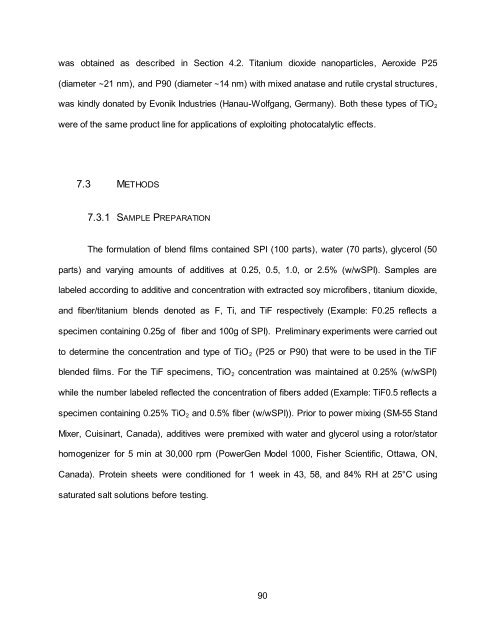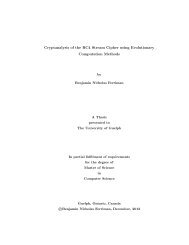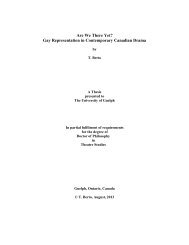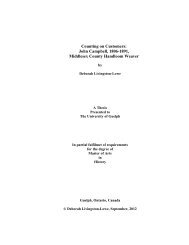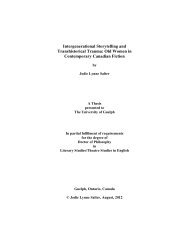THESIS - ROC CH ... - FINAL - resubmission.pdf - University of Guelph
THESIS - ROC CH ... - FINAL - resubmission.pdf - University of Guelph
THESIS - ROC CH ... - FINAL - resubmission.pdf - University of Guelph
Create successful ePaper yourself
Turn your PDF publications into a flip-book with our unique Google optimized e-Paper software.
was obtained as described in Section 4.2. Titanium dioxide nanoparticles, Aeroxide P25<br />
(diameter ~21 nm), and P90 (diameter ~14 nm) with mixed anatase and rutile crystal structures,<br />
was kindly donated by Evonik Industries (Hanau-Wolfgang, Germany). Both these types <strong>of</strong> TiO2<br />
were <strong>of</strong> the same product line for applications <strong>of</strong> exploiting photocatalytic effects.<br />
7.3 METHODS<br />
7.3.1 SAMPLE PREPARATION<br />
The formulation <strong>of</strong> blend films contained SPI (100 parts), water (70 parts), glycerol (50<br />
parts) and varying amounts <strong>of</strong> additives at 0.25, 0.5, 1.0, or 2.5% (w/wSPI). Samples are<br />
labeled according to additive and concentration with extracted soy micr<strong>of</strong>ibers, titanium dioxide,<br />
and fiber/titanium blends denoted as F, Ti, and TiF respectively (Example: F0.25 reflects a<br />
specimen containing 0.25g <strong>of</strong> fiber and 100g <strong>of</strong> SPI). Preliminary experiments were carried out<br />
to determine the concentration and type <strong>of</strong> TiO2 (P25 or P90) that were to be used in the TiF<br />
blended films. For the TiF specimens, TiO2 concentration was maintained at 0.25% (w/wSPI)<br />
while the number labeled reflected the concentration <strong>of</strong> fibers added (Example: TiF0.5 reflects a<br />
specimen containing 0.25% TiO2 and 0.5% fiber (w/wSPI)). Prior to power mixing (SM-55 Stand<br />
Mixer, Cuisinart, Canada), additives were premixed with water and glycerol using a rotor/stator<br />
homogenizer for 5 min at 30,000 rpm (PowerGen Model 1000, Fisher Scientific, Ottawa, ON,<br />
Canada). Protein sheets were conditioned for 1 week in 43, 58, and 84% RH at 25°C using<br />
saturated salt solutions before testing.<br />
90


